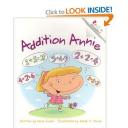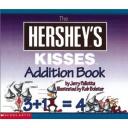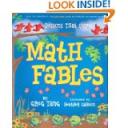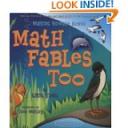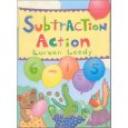Introduction:
Once students have had success with number sense and concept of number in grades K and 1, it is time to introduce addition and subtraction. The VA SOL for thread 2.5, states the students will recall addition facts with sums to 20 or less and the corresponding subtraction facts. It is important that both addition and subtraction are taught together to help students learn the concepts and understand the process rather than just producing an answer without an understanding of why it works this way. This setup and delivery of this skill is vital to the future success of any student in the undertaking of more challenging math concepts in the future.
Text Annotations:
Author: David Gisler
Illustrated by: Sarah A. Beise
In this short story Annie likes to count and counts everything in sight. Each page of the book is a math problem involving addition problems using numbers under 10. The back of the book contains a word bank totaling 30 commonly used words for this specific age group. This book would be best suited for children at the end of first grade who possess strong math ability or students entering second grade.
The Hershey Kisses Addition Book
Author: Jerry Pallotta
Illustrated by: Rob Bolster
With this delicious book, the reader will find themselves surrounded by chocolate math problems. In addition, there is a little history about the creation of the Hershey’s Kiss. The book continues with a discussion of addition vocabulary, the commutative property, and some of the basic rules of addition. Towards the end of the book, it starts to delve into adding three numbers and basic subtraction which would be an attempt to persuade the reader to read the next book in the series regarding subtraction. This book is suited for any child learning about the addition process and would be a complementary activity within the days lesson discussing addition.
Author: Greg Tang
Illustrated by: Heather Cahoon
In Greg Tang’s Math Fables, Tang uses poems to paint pictures of stories that include math problems. While the addition in this book is basic, yet appropriate to this SOL, it utilizes numbers under 10, the message sent to the reader is loud and clear. By the end of the book he includes some information on higher math discovering addend combination that equal 10. This is a wonderfully illustrated book that the children will enjoy reading in groups or independently.
Author: Greg Tang
Illustrated by: Taia Morley
This is the second book of the addition series from author Greg Tang. This book incorporates the same poetic verse that includes math addition problems within the poem. The addition problems themselves are at a beginner level but are still good examples of the addition process. Like all other Tang books, the illustrations are brightly colored and are a lot of fun for all ages to enjoy. In the back of this book, Tang includes some animal facts regarding the animals within this book, thus providing some cross curricular study in animal science.
Author/ Illustrator: Loreen Leedy
This book involves subtraction problems that the characters of this book require solving while attending a school fair. The teacher in the story, Miss Prime, shows the students how useful the ability to perform real world yet fictional subtraction type problems. The book is best suited for students towards the middle to end of second grade. Later in the book, some of the problems do involve regrouping and some money (decimals) problems which might be a challenge for beginner students learning about subtraction. The book has an answer key and provides a short explanation behind the answers to the problems it asks throughout the story.
Web Annotations
In this website from LearningPlanet.com, the game is titled Math Mayhem and is a speed challenge with other Internet players in addition, subtraction, multiplication and division.
This website from aplusmath.com is an addition game called MATHO that is a timed exercise that is fun for kids. When the questions are answered correctly, pictures are revealed.
Also from aplusmath.com is a subtraction game titled Hidden Picture. In this game the goal is to answer the subtraction questions correctly to identify the picture behind the answer tiles.
This website asks the question, “Are you a Math Magician?“. The player is assigned to complete 20 math problems as fast as they can.
Cool Math Games has a game titled Feed Fribbit Addition and Feed Fribbit Subtraction. This takes some hand eye coordination but is fun to play. Fribbit is hungry and needs flies marked with the answers to math questions. The object is to get Fribbit to eat the fly with the correct piece of the problem.
Additional Resources
Tina Cho has created a lesson titled Candy Corn Subtraction and in the lesson, she has the kids complete subtraction problems using the segments of the candy corn. She provides the candy corn templates and the instructions to go along with it. This lesson can be used in the fall season around Halloween, or certain can be used any time of the year. What child doesn’t like candy corn?
From the Education.com site, William L. Gaslin, Charles Lund, & Martin M. Gaslin have provided an example of addition and subtraction problems from a deck of cards. The web page is titled Disclose. This card activity can be differentiated for those that need additional assistance or for students that work better in homogeneous groups. It can also be played with two players or running through the deck a student can practice basic facts. The website provides a printable deck of cards if you do not already have one.
Scholastic.com has a page titled, Max’s Math: Card Castle Adventures and the lesson idea involves using a rhyming poem to answer basic math facts. The site is flexible as it includes audio of the poems that the teacher can let the students listen to. The site also provides a printable version as well. This will accommodate auditory and visual learners alike.
Another Scholastic.com page titled, Addition Facts provides a lesson activity focusing on the commutative property of addition and subtraction. The focus is to teach addition and subtraction together as opposed to teaching them seperately.

